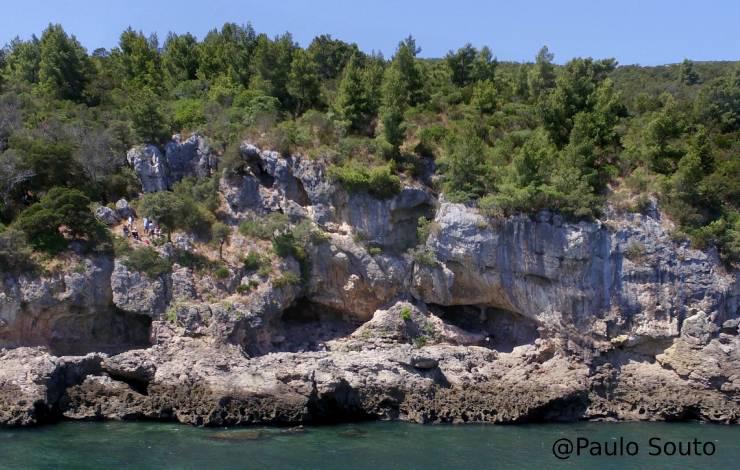26-03-2020

The Science magazine publishes in its March issue a study carried out in the Gruta da Figueira Brava (Portinho da Arrábida) that reveals that fishing and shellfish collection contributed very significantly to the subsistence economy of the people who inhabited it among 86 and 106 thousand years ago.
Paulo Legoinha, professor and researcher at the Department of Earth Sciences at NOVA School of Science and Technology, is one of the 21 co-authors who carried out this work, directed by João Zilhão, a researcher at the Archeology Center of the University of Lisbon (UNIARQ).
The cave was continuously used as a dwelling place over the twenty millennia between 86 and 106 thousand years ago - that is, during the last interglacial period, when the Earth's climate was similar to the current one. The archaeological remains left by these communities of Neanderthals — ashes, coals and other evidence of intensive use of fire, utensils in quartz and flint, food remains — are abundant.
Paulo Legoinha investigated the presence of foraminifera (microscopic marine organisms) in the archaeological deposits of the cave. The occurrence of these microfossils is related to the high eustatic level interval (MIS5e, ca. 110,000 years), during which the ocean excavated the cave system. The absence of foraminifers in all samples dated from the MIS 5c-MIS 5b interval also shows that the coastline was never close enough to the Figueira Brava cave so that foraminifers could be introduced into the cavity again and that there was no beach adjacent, but rather a strip of dunes with pine forest, which separated the cave from the sea.
The conclusions of this multidisciplinary study reflect that the majority of Neanderthals will have lived like those of Figueira Brava, that human familiarity with the sea and its resources is much older and extended than previously thought, and that the image of Neanderthals as people of the cold, specialized in hunting mammoths, rhinos, bison, and reindeer, it is a distortion created by the history of archaeological investigation.
Read the full article here.